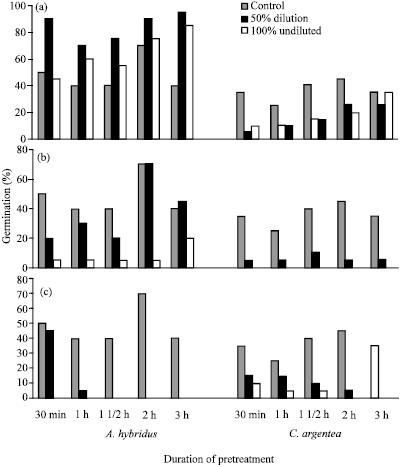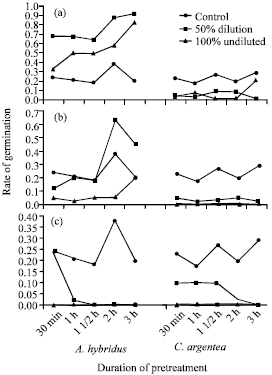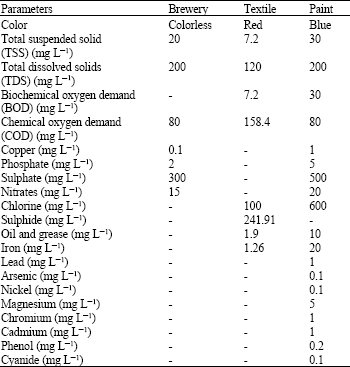Research Article
Effects of Brewery, Textile and Paint Effluent on Seed Germination of Leafy Vegetables-Amaranthus hybridus and Celosia argentea (Amaranthaceae)
Department of Chemical and Environmental Sciences,Babcock University, P.M.B. 21244, Ikeja, Lagos 100001, Nigeria
O.A. Oyelana
Department of Biological Sciences, Reedemers University, Km 46/48,Lagos-Ibadan Expressway, Ogun State, Nigeria
O. Ibidunmoye
Department of Chemical and Environmental Sciences,Babcock University, P.M.B. 21244, Ikeja, Lagos 100001, Nigeria
G. Anyaso
Department of Chemical and Environmental Sciences,Babcock University, P.M.B. 21244, Ikeja, Lagos 100001, Nigeria
A.A. Ogunnowo
Department of Chemical and Environmental Sciences,Babcock University, P.M.B. 21244, Ikeja, Lagos 100001, Nigeria











